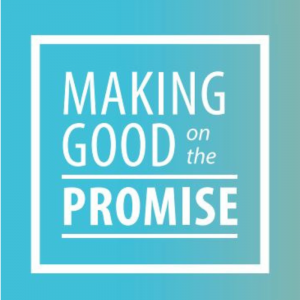 Without Limits: A Shared Vision for the Future of Career Technical Education (CTE Without Limits) calls on each level of leadership to create systems and structures that offer every learner access to high-quality Career Technical Education (CTE) opportunities that lead to career success. This requires dismantling systemic and institutional barriers that limit equitable access to and success in CTE for learners from special populations.
Without Limits: A Shared Vision for the Future of Career Technical Education (CTE Without Limits) calls on each level of leadership to create systems and structures that offer every learner access to high-quality Career Technical Education (CTE) opportunities that lead to career success. This requires dismantling systemic and institutional barriers that limit equitable access to and success in CTE for learners from special populations.
In support of the CTE Without Limits vision, Advance CTE recently released the Improving Equity and Access to Quality CTE Programs for English Learners brief. This resource explores English Learner (EL) enrollment in CTE and three major barriers that English Learners face in accessing and succeeding in CTE programs, concluding with recommendations on how state leaders can take the lead in addressing these barriers and expanding access to high-quality CTE opportunities.
1.Barrier: Irrelevant or Impersonal Curricula and Assessments
In both general education and CTE courses, English Learners are frequently exposed to one-size-fits-all curricula that are not personalized to their unique interests, career goals and learning needs. Additionally, ELs may need to take remedial classes that take time away from credit-bearing courses that lead to certificate or degree program completion or limit opportunities to enroll in CTE courses. Finally, many forms of assessments, including entrance and placement exams and state standardized tests, place ELs at a disadvantage by simultaneously testing both content knowledge and language skills. These assessments typically do not recognize the unique value that ELs offer as emergent bilinguals with a wealth of cultural and linguistic knowledge.
Addressing the Barrier: Providing adaptive instruction and relevant skill-building opportunities are critical for ELs. The state of Washington’s Integrated Basic Education Skills and Training (I-BEST) team-teaching instructional model supports these learners by teaching both basic language skills and career readiness skills. Studies from the Department of Health and Human Services have confirmed the effectiveness of I-BEST at improving educational outcomes. Additionally, states should make an effort to make assessments more accessible. Virginia created a catalog of industry credentials with testing accommodations for ELs, with direction on how districts and schools should notify ELs about these accommodations prior to taking tests.
Another avenue for addressing the educational needs of ELs is leveraging federal funding – a program provider in Ohio utilized funds from Title III of the Every Student Succeeds Act to expand culturally responsive career counseling and career exploration opportunities for ELs. Finally, professional development for CTE educators is necessary to ensure that instruction is culturally responsive and adaptive. Arizona’s Department of Education has initiated a collaborative interagency project to develop professional learning opportunities for instructors across the state, centered on identifying and deploying strategies to address barriers for special populations in the classroom.
2.Barrier: Competing Priorities and Time Demands
Many ELs have family and work demands that often result in class scheduling conflicts. ELs disproportionately experience low-income, and many work in jobs with demanding, unpredictable work schedules and low wages. Further, ELs may face additional barriers to accessing child care and transportation to get to class.
Addressing the Barrier: Wraparound services are essential for this population to access and succeed in CTE programs. States and local leaders can work together to braid different funding streams and leverage federal grants to coordinate community services and address barriers to accessing CTE. Local education agencies must also provide timely interventions and long-term supports. Georgia provides targeted guidance for ELs and other special populations at risk of dropping out of high school through the Coordinated Career Academic Education and Project Success support services. Additionally, Georgia’s technical colleges employ Special Populations Coordinators to support these learners.
3.Barrier: Few Avenues for Elevating Learner Voices and Outcomes
While K-12 schools are required to collect and report data on learners’ language proficiency, guidance for collecting and reporting these data at the postsecondary level is extremely limited. States typically do not provide any direction on how postsecondary institutions can best serve ELs. Additionally, there are few mechanisms for elevating the voices and lived experiences of ELs within decision-making processes, exacerbating the lack of knowledge on learners’ participation rates and outcomes in CTE programs. In order to truly understand the scope of institutional barriers and create meaningful solutions, state CTE leaders must find ways to access crucial data on this learner population.
Addressing the Barrier: The Comprehensive Local Needs Assessment (CLNA) process required under the Strengthening Career and Technical Education for the 21st Century Act (Perkins V) can be a critical avenue for collecting and reporting data on ELs. Special populations are a required stakeholder to consult when developing CLNAs, and state plans must address learners’ access to CTE programs, as well as their performance levels. The Illinois Community College Board developed a CLNA template with specific fields for describing how the equity needs of each learner group are being met at every stage of the process.
This resource is part of the Making Good on the Promise series, which defines key challenges that different learners face and explores solutions that State CTE Directors can implement to help close equity and opportunity gaps in CTE. For more resources on supporting special populations in CTE, visit Advance CTE’s Learning that Works Resource Center.
Allie Pearce, Graduate Fellow
